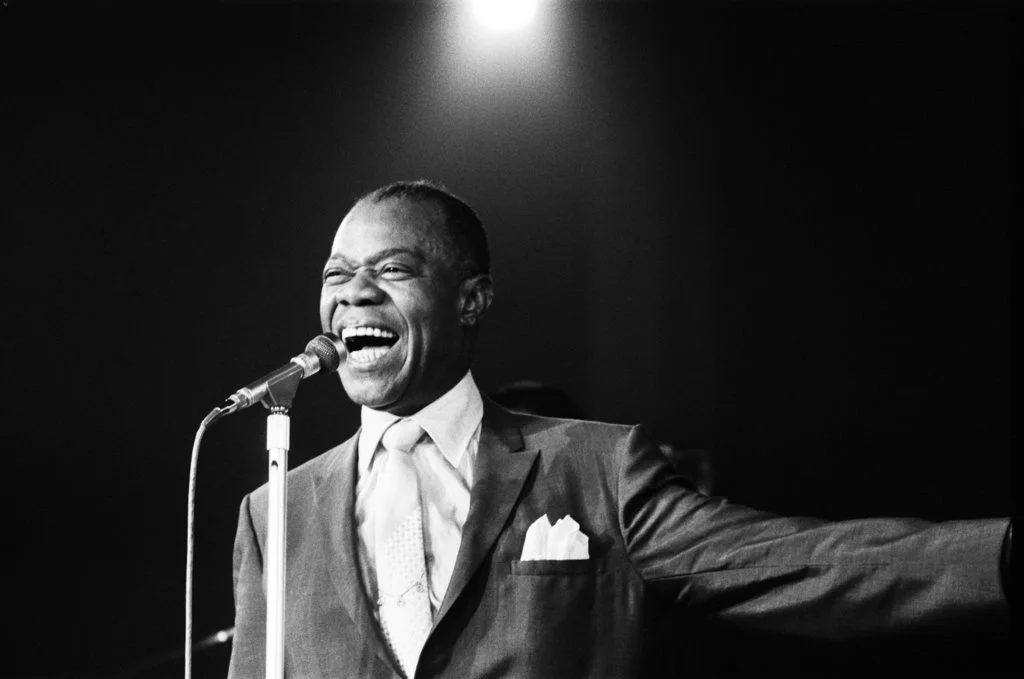Let us now turn our attention back to the legendary jazz musician Louis Armstrong. While he first rose to fame as a jazz trumpeter and bandleader, Armstrong also became one of the most beloved and recognizable pop singers of the twentieth century. Spanning a career of five decades, he was celebrated not only for his virtuosic trumpet playing but also for his distinctive raspy voice, charismatic stage presence, and pioneering vocal style.
As discussed in a previous chapter, Armstrong was a central figure in the early development of Dixieland and swing jazz. He gained prominence through his groundbreaking recordings with ensembles like the Hot Five and Hot Seven in the 1920s. Initially known for his instrumental brilliance, Armstrong’s vocal talent soon earned equal acclaim, especially as he introduced the public to a new style of singing: scat.
By the 1930s, Armstrong had become a fixture in popular music, often collaborating with big band leaders such as Count Basie and delivering jazz-inflected interpretations of pop standards. He sang and played on timeless songs including:
“It Don’t Mean a Thing (If It Ain’t Got That Swing)”
“Ain’t Misbehavin’”
In these performances, Armstrong seamlessly alternated between trumpet solos and vocal sections, demonstrating his unparalleled ability to blur the lines between jazz and popular music.
Armstrong’s vocal duets with Ella Fitzgerald stand among his most charming and enduring contributions to American popular music. Songs such as:
“They Can’t Take That Away from Me”
“Dream a Little Dream of Me”
highlight the warmth and playfulness of Armstrong’s voice as well as his remarkable chemistry with Fitzgerald. Together, they brought jazz phrasing and spontaneity to songs from the Great American Songbook, making these classics accessible to a wider audience.
Late in his career, Armstrong recorded what would become one of his most iconic and enduring songs: “What a Wonderful World” (1967)
Written by George David Weiss and Bob Thiele (under the pseudonym George Douglas), the song was specifically crafted for Armstrong. Weiss explained that he was inspired by Armstrong’s role as a cultural unifier, someone who brought joy and hope to audiences of all races during a period of significant civil unrest. Although the song topped the UK pop charts—remarkably during the height of The Beatles’ dominance over the charts—it initially struggled in the United States. This was largely due to the president of ABC Records disliking the track and refusing to promote it. Despite this early setback, “What a Wonderful World” went on to become one of Armstrong’s most beloved recordings, embraced across generations as an anthem of hope, peace, and unity.
Over the course of his career, Louis Armstrong sold more than 75 million records worldwide and received numerous accolades, including a Grammy Lifetime Achievement Award in 1972. Louis Armstrong’s contributions to both pop and jazz vocal traditions are immeasurable. His innovative approach to melody, rhythm, and vocal phrasing helped shape the sound of American popular music. Beyond his technical mastery, Armstrong’s unique ability to connect emotionally with audiences made him a singular and enduring figure in twentieth-century music. As both a musician and singer, Armstrong remains a towering presence in American culture.
